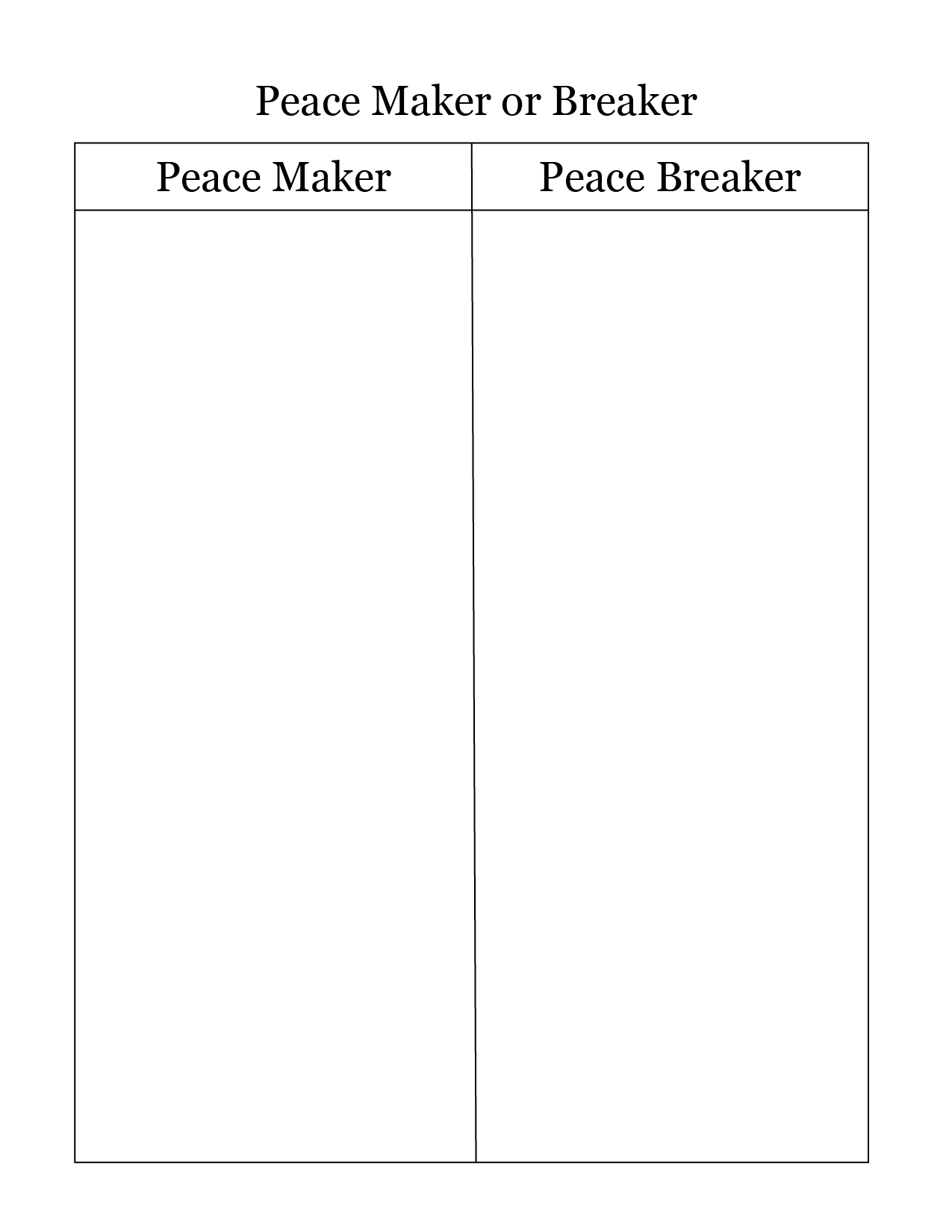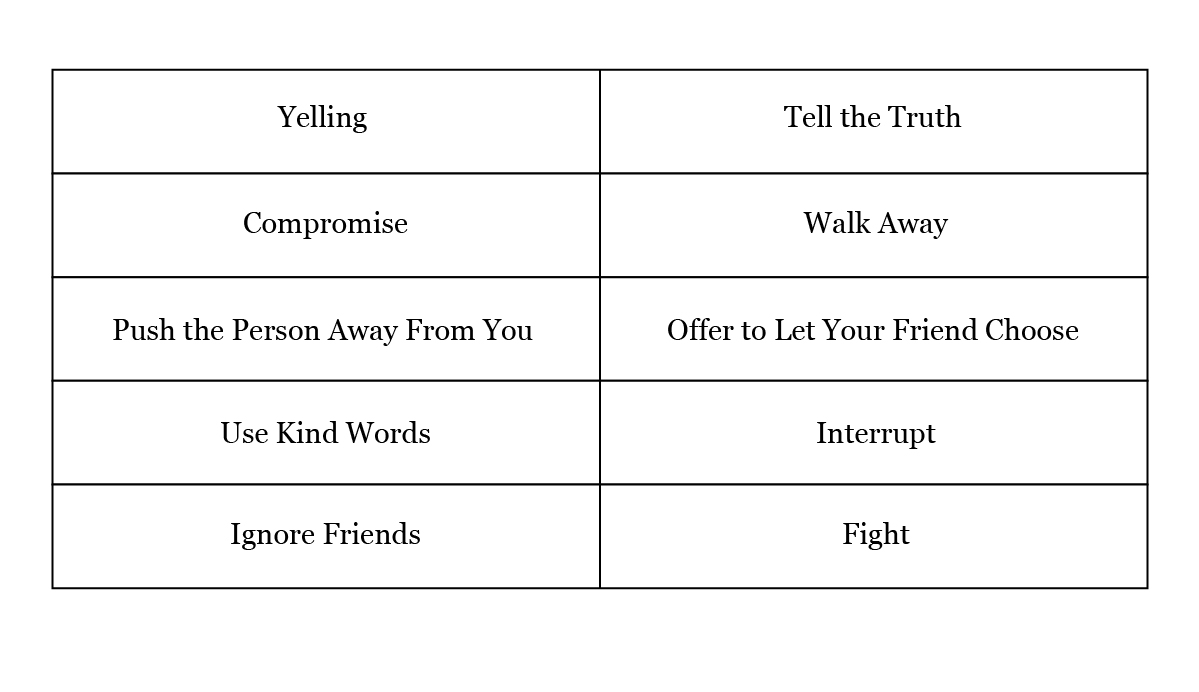
Improve life outcomes
Jumpstart: Conflict Resolution - Universal
Jumpstart Universal SEL
CASEL Competency Focus: Responsible Decision Making
Time: 20-30 minutes
Materials: Chalk/White Board, Dry Markers/Chalk
T Chart Worksheet (Included) Example Cards (Included for Primary), Scissors, Glue (Primary), Pencil/Pen
Objectives:
1. Restate in your own words the meaning of conflict.
2. Identify potential conflicts in your daily life.
3. Share one strategy to resolve a conflict.
CCSS.ELA-LITERACY.SL:
- Pose and respond to specific questions by making comments that contribute to the discussion and elaborate on the remarks of others.
- Continue a conversation through multiple exchanges.
- Speak audibly and express thoughts, feelings, and ideas clearly.
Lesson Procedures
Introduction: Begin the lesson by defining conflict and resolution separately. Using those definitions and context clues, have students tell you in their own words what conflict resolution means. How is conflict resolution different from cooperation? How are they similar? Once the discussion is complete, brainstorm conflict resolution strategies. Examples include; compromise, walk away, ask the person to stop, etc. List answers on chart paper or the board.
Game Time: Peace Maker or Breaker!
- Primary Game and Secondary Game: Peace Maker or Breaker! is a simple and quick game used to reinforce how to avoid confrontation by choosing an appropriate action. For primary grades, use the T Chart and Peace Maker or Breaker! example cards to complete the page. Have students cut and glue the appropriate category for the example card. Example: “Yelling at a classmate” would be listed under Peace Breaker. For older students, use the blank Peace Maker or Breaker! T Chart and have students complete their OWN examples.
Application
Primary and Secondary:
In groups or pairs, have students create a script demonstrating a conflict and how to resolve it. Once the scripts are finished, use the “Create” button found under the curriculum tab to create an animation using the contents of the script. A second option is to have students act out their scripts.
Try it out!
Primary and Secondary: Play a new game with friends or family. Reflect on how players acted during the game. Were there any conflicts? Were any conflict resolution strategies used?

